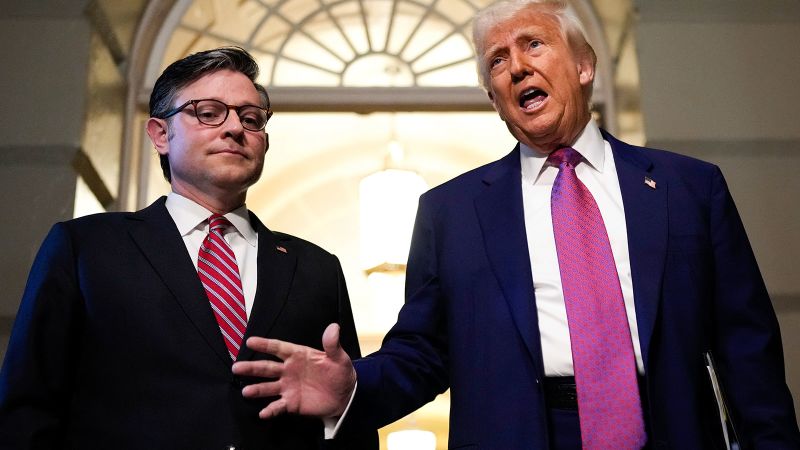In recent times, the bond market, often regarded as a stagnant and unexciting realm, has dramatically highlighted its influence on Washington’s fiscal policies. A striking event occurred during a 20-year bond auction conducted by the U.S. Treasury, where the demand for these bonds reached its lowest point since February. This lackluster demand signaled to investors a desire for higher yields, indicating that they are seeking greater compensation for the risks associated with lending money to the U.S. government.
The ramifications of this weak auction were not lost on President Donald Trump and his Republican allies in Congress. The lukewarm demand from investors serves as a glaring red flag, suggesting that confidence in the Trump administration’s economic strategies—most notably the much-touted “Big, Beautiful” tax cut bill—has waned. Investors now view funding the federal government as a riskier investment and are inclined to demand higher returns, effectively shaking the foundation on which fiscal policies are built.
Following the bond auction’s poor results, the stock market reacted sharply. The Dow Jones Industrial Average fell by more than 800 points, a striking decline that reflects the anxiety prevailing on Wall Street. Market fluctuations of this magnitude feed into the broader economic landscape, potentially affecting individuals and businesses nationwide—a phenomenon commonly referred to as the trickle-down effect.
The bond market had already been showing signs of distress prior to the auction results. Over recent weeks, bond prices have been declining while yields—the inverse of bond prices—have been on the rise due to a multitude of factors. Although recession fears were somewhat tempered by recent tariff reductions on China, inflation remains a persistent concern. Major corporations like Walmart have indicated rising prices for consumers due to these tariffs, thus contributing to the inflationary environment.
Moreover, global trends have further complicated the landscape. Rising yields worldwide have intensified competition for U.S. bonds. The narrative surrounding U.S. investments has shifted, leading to increased foreign skepticism towards American Treasury instruments, particularly in the wake of concerns surrounding the burgeoning national debt and a credit rating downgrade attributed to the impending tax cuts.
Interestingly, this has led to a resurgence of the so-called “Sell America” trade, growing out of fears that the ambitious tax cut plan would exacerbate national debt, leaving foreign investors hesitant to engage with U.S. Treasuries. Treasury Secretary Scott Bessent and Commerce Secretary Howard Lutnick reportedly shared these fears with Trump, impacting his decision-making. Following the controversial “Liberation Day” trade announcement, Trumpbacked off some of the significant tariffs he had previously announced, showing an awareness of the bond market’s influence on economic policy.
With these considerations in mind, one pivotal question looms: will the pressures from a troubled bond market compel the Republican Party to reassess its approach to the tax cut bill? Conservative factions within the party have been vocal regarding the Congressional Budget Office’s assertion that the tax bill could lead to an additional $4 trillion in national debt. This alarming figure should not simply be viewed in isolation; it translates to substantial interest obligations that America must meet, further complicating the fiscal landscape.
As Congress moves toward raising the debt ceiling, the implications of higher yields present a daunting scenario for the nation’s financial health. An increase in yields means that financing the nation’s debt could become significantly more costly, which may place future entitlement programs at risk. The discourse surrounding potential reductions in Medicaid funding is a testament to the difficult choices legislators might face.
Furthermore, higher bond yields are not just an abstract economic issue; they directly impact everyday Americans. As yields rise, essential credit-dependent financial products such as mortgages, credit cards, and auto loans are also expected to increase in cost. This economic strain could undermine the intended effects of the tax cut bill, which was designed to bolster the economy.
In summary, the bond market’s recent turbulence signals a potential shift in U.S. fiscal policy, highlighting the balance of investor confidence and the realities of national debt. What unfolds in Congress in response to these economic signals could have deep and far-reaching implications for the American economy and its citizens.



